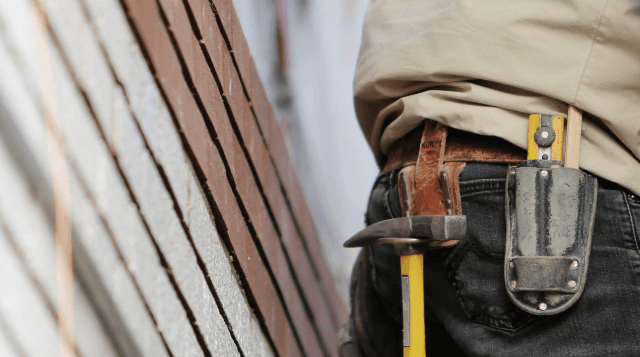
DISASTER PREPAREDNESS
Are you ready for the hurricanes and tropical storms, fires and floods, and other disasters that nature can (and does) throw at us? Being prepared—having the right supplies and knowing what to do when—can be key to surviving these events. But, it also can be confusing and confounding.
We can help.
On this page you’ll find an array of information and resources to help you build an emergency supply kit, know when, where and how to evacuate, and more. That includes helping you prepare for our annual hurricane season, which runs from June 01 through Nov. 30.
You also can find this vital information in our fact sheet series:
- Weather Disaster Food and Supply Shopping List (English| Español)
- Disaster Planning: Evacuation Centers (English | Español)
- Disaster Planning: Your Pets (English | Español)
- Disaster Planning: After the Storm (English | Español)
- Disaster Planning: Food Safety (English)
And, of course, you'll get this information at any of our “Disaster Preparedness” classes, at a location and date/time convenient for you.
Remember, it’s never too early to be ready.
Gather Information
Preparation starts by knowing the dangers you might face. Learn about the risks around you, such as which areas and/or streets flood easily. Check on your storm evacuation level and FEMA flood zone. Learn more by picking up a free copy of the “All-Hazards Disaster Planning Guide” from our UF/IFAS Extension Sarasota County office, Sarasota County public libraries, or any government building in the county.
And, stay up to date on potentially dangerous situations. Sign up for ALERT Sarasota to receive current information. And, during a weather event, tune into the local stations for updates.
Create a Plan
Plan your course of action before a disaster strikes. Start by gathering a list of all your contacts, including family members, friends, neighbors and others, whether local or out of the area. Some, you’ll want to contact to let them know your status. Others, you might need to reach for repairs or insurance. And still others might help you assess your property, if you have left but they’ve stayed.
Determine whether your home can provide adequate shelter against disasters, like hurricanes or tornadoes. Pick out the safest meeting place (e.g., sturdy walls with no windows) in your home, should you need it.
You’ll also likely have to plan whether and when to evacuate in the face of disaster. Plan for those with special needs by completing the Sarasota County Medical Needs Application. Learn your closest shelter. Make a plan for your pets. And, of course, communicate your plans with those family members or others close to you,
Build a Kit
As a general rule, it’s up to us to survive the first three to seven days after a disaster. It typically takes that long to mobilize disaster resources and reach those in affected areas. So, make sure you have gathered enough food, water, and supplies to be self-reliant for seven days. Check your supplies against our checklist.
Shelter or Evacuate
Often, a difficult choice—for those not in an active evacuation zone—comes in deciding whether to stay or go when disaster approaches. Sheltering in place (e.g., at home) offers convenience, but might not provide enough safety. Evacuation centers typically can withstand extreme conditions, but might mean discomfort, especially if they lose power.
Key considerations when deciding whether to evacuate include the following:
- Was my home built before the 2002 Florida Building Code? Do I live in an evacuation level? On a barrier island?
- Is my home located in a storm surge zone or low-lying area that is prone to flooding?
- Do I live in a mobile home, recreational vehicle (RV), or a boat?
If you answered “yes” to any of these questions, and you determine that your home is not safe to ride out a storm, you need to evacuate! Government evacuation centers provide that, but you might also consider sheltering at a friend’s or relative’s home that has shutters and is located outside of the evacuation level.
Finally, if you plan on driving out of the storm’s forecasted path, decide and act early. Tropical storms can strengthen quickly and change directions.
Resources
Blog Posts
- Disaster prep-related Sarasota County Extension blog posts
- Hurricane-related Sarasota County Extension blog posts
Fact Sheets
- Weather Disaster Food and Supply Shopping List (English| Español)
- Disaster Planning: Evacuation Centers (English | Español)
- Disaster Planning: Your Pets (English | Español)
- Disaster Planning: After the Storm (English | Español)
- Disaster Planning: Food Safety (English)
General Preparedness
- Disaster Preparedness & Recovery - UF/IFAS Extension: Solutions for Your Life (ufl.edu)
- Hurricane Preparedness | Sarasota County, FL (scgov.net)
- ALERT Sarasota
Medical Needs
Agricultural Considerations
- Blog post: Sarasota County ag community prepares for storm issues
- Florida State Agricultural Response Team (SART): Sarasota County
- UF/IFAS EDIS: Emergency Considerations for Cattle
- UF/IFAS EDIS: USDA Farm Service Agency Disaster Assistance



